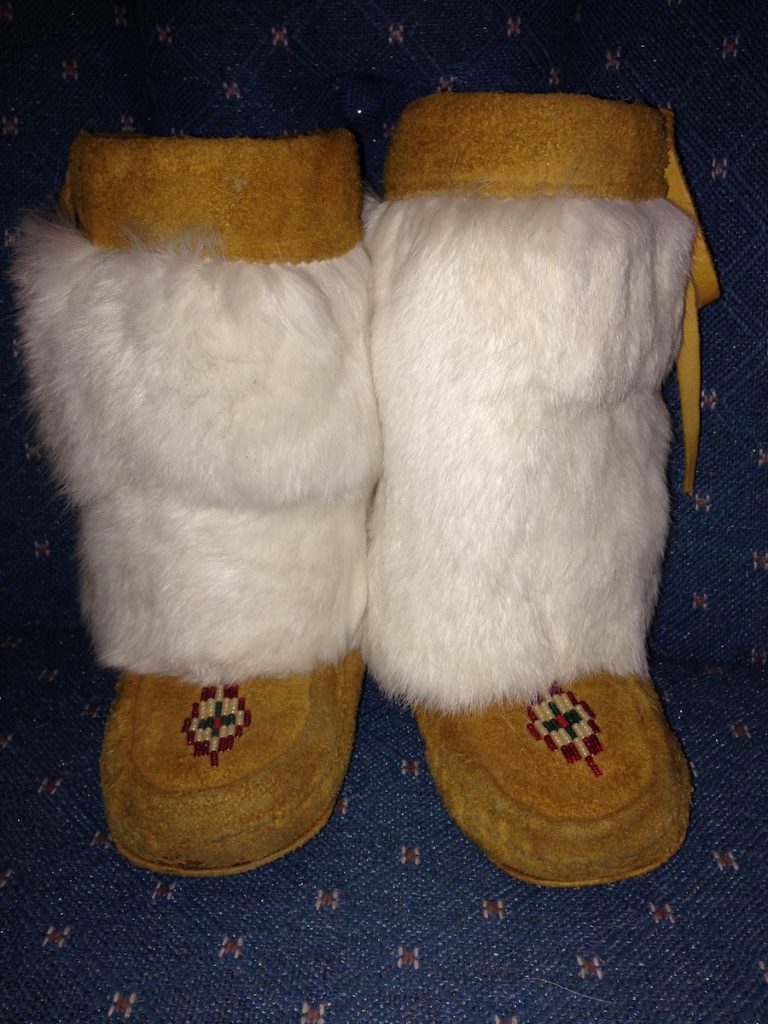On Thursday, March 11, staff and students at the Delta School District are holding Roc Your Mocs, an event to celebrate cultural diversity and identity through traditional footwear.
The original ‘Rock Your Mocs’ event takes place annually in November. The campaign started in 2011 in the U.S. in support of National Native American Heritage Month and provides a positive opportunity for Indigenous people to unite and celebrate tribal individuality by wearing moccasins. The Canadian adaptation, The Moccasin Identifier, was created by Carolyn King in partnership with the Mississaugas of the Credit First Nations and the Greenbelt Foundation to bring awareness to the culture, history and Treaty relationships between Indigenous and non-Indigenous Canadians.
“With our Delta adaptation, Roc Your Mocs, we are inviting students and staff to celebrate their cultural pride, diversity and Identity,” said Nathan Wilson, Indigenous Cultural Enhancement Facilitator with Indigenous Education. “We will be using the event to teach about the diversity and identity of different cultures around the world with a focus on Indigenous peoples/culture through moccasin history, design, and story, as well as learn from each other about the many rich cultural experiences we have here in Delta.”
Over the last few weeks, educators from around the district have participated in a series of workshops to learn the process of how to make a “pucker-toe” moccasin, explore Indigenous diversity, and develop an awareness and appreciation for the skill and knowledge involved that they will share with their students during Roc Your Mocs.
“Our hope is that Roc Your Mocs will unite staff and students from across the district in a fun event that also sparks important discussion and dialogue,” said Nathan. “We are encouraging everyone in the district to design their own moccasin vamps (the part of the moccasin that covers the top of the foot and toes) to highlight their own identity or to share their own cultural footwear, special slippers, or even fun socks. We will ask students and staff to share photos of their footwear for a chance to win prizes.”
“Our Roc Your Mocs event will help to bring attention to the diversity, the identity, and the value of Indigenous knowledge shared among all First Nations, Inuit and Métis within Canada and globally. We hope it will also encourage all students – of Indigenous and non-Indigenous ancestry – to take pride in their culture,” said Nathan. “For our educators and other staff, this is an amazing opportunity to both learn from our students and to learn more about them as individuals. This is extremely important as building connections with our students is key to supporting and enhancing their learning.”
A part of the Indigenous lens for Roc Your Mocs is to understand that diversity is not just the physical aspect of a community, it is also about identity. The implementation of the Indian Act in 1867 sought to remove the Indigenous identity. Through acts such as the creation of reserves and Indian Residential Schools, Indigenous identity became threatened. The long-term effects of these acts continue today. The Truth and Reconciliation Commission recommended 94 calls to action to help heal the effects of the Indian Act and begin to rebuild Indigenous identity among all First Nations, Inuit, and Métis. Today, many Indigenous peoples live off reserve and away from their community. They may not be connected to the language, knowledge, and history of their Nation. Education is considered to be one of the greatest hopes for repairing cultural attitudes, redressing the legacy of Indian Residential Schools, and advancing the journey of reconciliation.
Recognizing diversity, cultural pride and identity can be shared in a number of ways. We acknowledge there is a diversity of style and design among moccasins that is directly connected to the territory in which they come from. The access to specific resources also dictates the material used, as well as the function. The design is specific to the skilled artist and/or the person wearing the moccasin. Seasons will also dictate the function and form of the moccasin, for example with a boot cuff or fully lined, vs. a slipper style or dance wear.
In Indigenous culture, wearing moccasins is known as “carrying moccasins.” The idea of “carrying” refers to not only carrying yourself but all those stories and knowledge of the ancestors who have passed on the skills to make a moccasin and the gifts of the animals and mother earth from which the moccasin is made. It is the responsibility of the person carrying the moccasin to step forward in a good way (Dr. Niigaan Sinclair).

Saulteaux Cree – Saskatchewan
Edith Cyr (1914-2000)
Hide and rabbit mocassins
Shared with permission – Diane Jubinville

